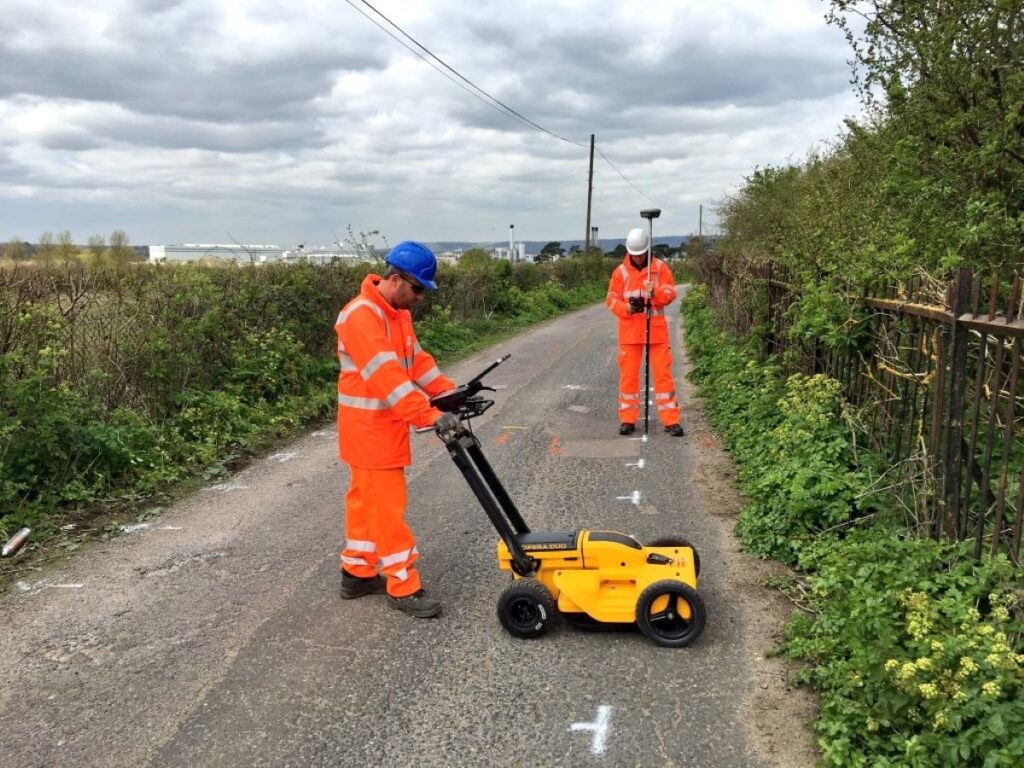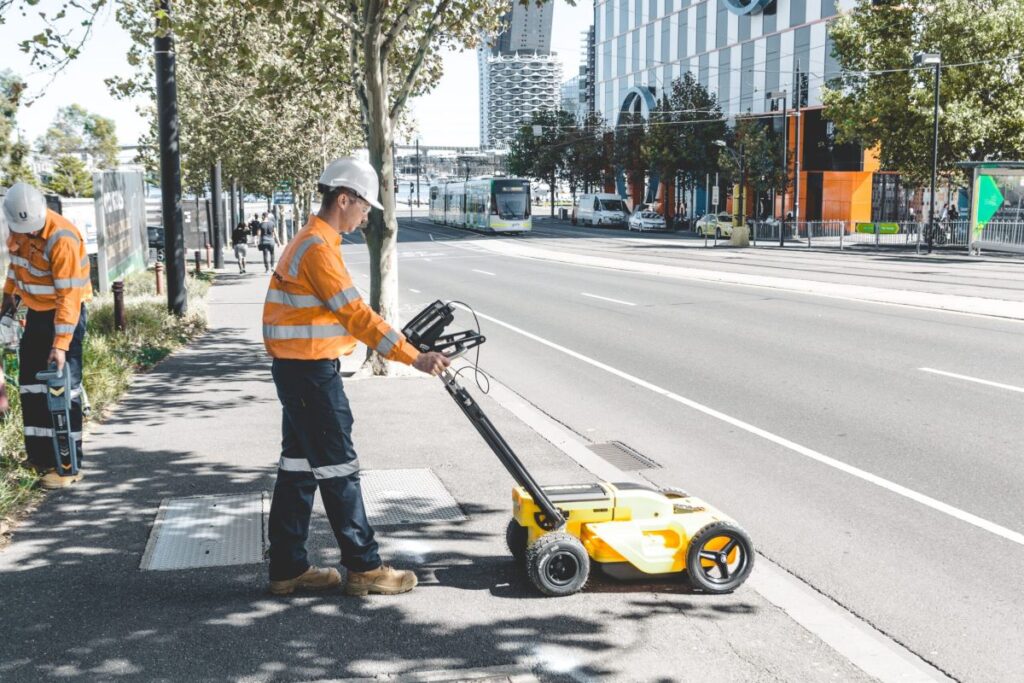In the modern world, the underground infrastructure is a complex network of utilities that includes electricity, water, gas, telecommunications, and sewage systems. These utilities are essential for daily life, yet they are often hidden beneath the surface, making them vulnerable to accidental damage during construction or excavation activities. The use of underground utility locators has become crucial in preventing costly damages and ensuring safety. This article explores how these tools work, the benefits they offer, and the importance of their use in various industries.
The Importance of Underground Utility Locators
Underground utility locators are specialised devices designed to detect and map the location of buried utilities. Their primary purpose is to prevent accidental strikes during excavation, which can lead to significant financial losses, project delays, and safety hazards.
Understanding the Risks
Construction and excavation activities inherently involve risks, particularly when it comes to underground utilities. Striking a gas line can result in explosions, while damaging electrical cables can lead to power outages or electrocution. Water mains can cause flooding, and hitting telecommunication lines can disrupt services for entire communities. The financial implications of such incidents can be staggering, with costs not only related to repairs but also to potential legal liabilities and fines.
According to industry reports, accidental utility strikes can cost companies thousands to millions of dollars, depending on the severity of the damage and the nature of the utility involved. Therefore, employing underground utility locator is not just a precaution; it is a necessary step in safeguarding both the workforce and the public. Additionally, the environmental impact of such strikes cannot be overlooked. For instance, a ruptured gas line not only poses a risk to human safety but can also lead to harmful emissions and environmental degradation, necessitating extensive cleanup efforts and regulatory scrutiny.
How Utility Locators Work
Underground utility locators utilise a combination of electromagnetic and ground-penetrating radar technologies to detect buried utilities. Electromagnetic locators work by sending a signal through the utility lines, which then generates a magnetic field that can be detected at the surface. This method is effective for locating metallic pipes and cables.
On the other hand, ground-penetrating radar (GPR) uses high-frequency radio waves to identify objects beneath the ground. GPR can detect both metallic and non-metallic utilities, making it a versatile tool for utility mapping. By interpreting the data collected, operators can create a comprehensive map of the underground infrastructure, allowing for informed decision-making during excavation. Moreover, advancements in technology have led to the development of more sophisticated locators that can provide real-time data and integrate with Geographic Information Systems (GIS), enabling better planning and coordination of construction projects. This integration not only enhances the accuracy of utility mapping but also facilitates communication between various stakeholders, ensuring that everyone involved is aware of the potential risks and the layout of underground utilities before work commences.
Benefits of Using Underground Utility Locators
The advantages of employing underground utility locators extend beyond mere damage prevention. They encompass a range of benefits that contribute to the overall efficiency and safety of construction projects.
Cost Efficiency
Investing in underground utility locators can lead to substantial cost savings in the long run. By accurately locating utilities before excavation begins, companies can avoid the expenses associated with repairing damaged lines. Additionally, the time saved by preventing utility strikes can significantly enhance project timelines, allowing for more efficient use of resources.
Moreover, many local regulations require utility mapping before excavation. By adhering to these regulations, companies can avoid fines and legal repercussions, further enhancing their financial standing. The initial investment in utility locating technology often pays for itself through the prevention of costly incidents.
Enhanced Safety
Safety is paramount in any construction or excavation project. Underground utility locators play a vital role in protecting workers and the public from potential hazards. By accurately identifying the location of utilities, the risk of accidental strikes is minimised, leading to a safer working environment.
Furthermore, many utility locator services provide training for operators, ensuring that they are well-versed in the technology and its applications. This training not only enhances the effectiveness of the tools but also fosters a culture of safety within the organisation.
Improved Project Planning
Having a clear understanding of the underground utility layout allows for better project planning and execution. Detailed maps generated by utility locators enable project managers to strategise excavation activities more effectively, reducing the likelihood of unexpected challenges.
Additionally, accurate utility mapping can facilitate communication among stakeholders, including contractors, engineers, and utility providers. This collaborative approach ensures that everyone involved is aware of the potential risks and can work together to mitigate them.

Applications Across Industries
Underground utility locators are employed across various industries, each benefiting from the technology in unique ways. From construction to telecommunications, the applications are vast and essential.
Construction Industry
The construction industry is perhaps the most significant user of underground utility locators. Before any excavation begins, it is crucial to identify the location of utilities to prevent accidents. Construction companies often rely on utility locators to ensure that their projects proceed smoothly and safely.
In addition to preventing accidents, utility locators help construction firms comply with local regulations regarding utility mapping. This compliance is essential for obtaining necessary permits and avoiding fines, making utility locators an indispensable tool in the construction process.
Telecommunications
In the telecommunications sector, underground utility locators are vital for installing and maintaining fibre optic cables and other communication lines. The rapid expansion of telecommunication networks has increased the need for precise utility locating to avoid disruptions in service.
Telecommunications companies utilise utility locators to map existing infrastructure and plan new installations. By accurately identifying the location of buried cables, these companies can minimise service interruptions and enhance customer satisfaction.
Public Works and Utilities
Public works departments and utility companies also rely heavily on underground utility locators. These organisations are responsible for maintaining essential services such as water, gas, and electricity. Accurate utility mapping is crucial for maintenance activities, repairs, and upgrades.
By employing utility locators, public works departments can efficiently respond to emergencies, such as water main breaks or gas leaks, ensuring that services are restored promptly and safely. This proactive approach not only enhances public safety but also improves the overall reliability of essential services.
The Future of Underground Utility Locating
As technology continues to evolve, so too does the field of underground utility locating. Innovations in detection methods and data analysis are paving the way for more accurate and efficient utility mapping.
Emerging Technologies
Advancements in artificial intelligence and machine learning are beginning to play a role in underground utility locating. These technologies can analyse data from utility locators to identify patterns and predict potential issues, allowing for more proactive maintenance and planning.
Additionally, the integration of Geographic Information Systems (GIS) with utility locating technology is enhancing the ability to visualise and manage underground infrastructure. This integration allows for more comprehensive mapping and analysis, providing stakeholders with valuable insights into their utility networks.
Increased Awareness and Training
As the importance of underground utility locating becomes more widely recognised, there is a growing emphasis on training and education within the industry. Many organisations are investing in training programmes to ensure that operators are proficient in using utility locating technology.
Furthermore, increased awareness of the risks associated with underground utilities is leading to more stringent regulations and best practices. This shift is likely to result in a greater reliance on utility locators, as companies strive to meet safety and compliance standards.

Conclusion
In conclusion, underground utility locators play a crucial role in preventing costly damages and enhancing safety across various industries. By accurately identifying the location of buried utilities, these tools not only protect workers and the public but also contribute to cost savings and improved project efficiency.
As technology continues to advance, the future of underground utility locating looks promising, with innovations poised to enhance accuracy and efficiency further. Embracing these technologies and prioritising safety through proper utility locating practices is essential for the continued success and sustainability of construction and utility projects.
Ultimately, investing in underground utility locators is an investment in safety, efficiency, and the protection of vital infrastructure. As the demand for construction and utility services continues to grow, the importance of these tools will only increase, making them an indispensable part of modern operations.
More to Read : How Construction Surveying Impacts Project Timelines and Budgets